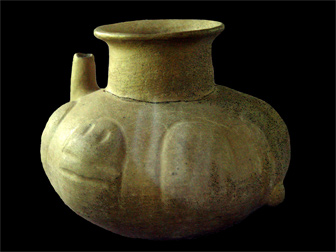Chocolate first used more than 3100 years ago
Chocolate first used more than 3100 years ago
mongabay.com
November 12, 2007
Cacao, the source of chocolate, was in use at least at least 3000 years ago according to evidence found by archaeologists working in Honduras. The discovery pushes back the earliest known use of cacao by 500 years.
Dr. John Henderson of Cornell University and colleagues identified residue of the chemical compound theobromine, which occurs only in the cacao plant, in pottery dating to around 1150 B.C. at sites in what is now Puerto Escondido, Honduras. The find shows that Mesoamericans were making cacao beverages earlier than was previously believed.
The researchers say that the cacao beverages of the era were likely “fermented drinks made from pulp, rather than chocolate-flavored drinks made from the seeds,” according to a news release from PNAS. “The style of the pottery indicates that cacao was served at important ceremonies to mark weddings and births.”
 Bodega Brown bottle from northern Honduras. This vessel is of the same type and form as sample 8K-31. The bottle is from the collection of the Instituto Hondureno de Antropologia e Historia, Museo de San Pedro Sula, Honduras. Image courtesy of PNAS/National Academy of Sciences (Copyright 2007). |
“These results support the proposition that fermenting the fruity pulp of cacao to produce a chicha-like beverage probably preceded the use of the seeds for chocolate,” write the authors. “The frothed chocolate drink, made from cacao seeds, came to be central to social and ritual life throughout Mesoamerica, ultimately becoming the standard of economic value (‘money’) for the Aztec empire, at its time one of the largest urban societies in the world.”
CITATION: John S. Henderson, Rosemary A. Joyce, Gretchen R. Hall, W. Jeffrey Hurst, and Patrick E. McGovern (2007). “Chemical and archaeological evidence for the earliest cacao beverages,” Proceedings of the National Academy of Sciences. 12-November-2007
This article is based on a news release from PNAS and the cited paper.